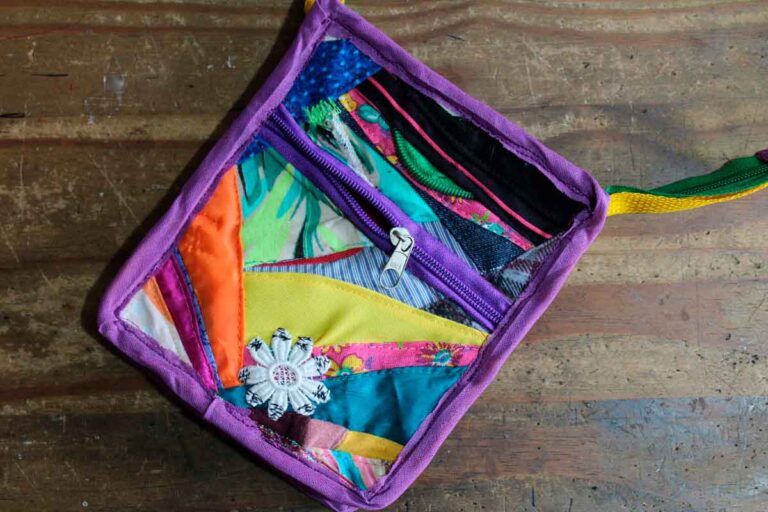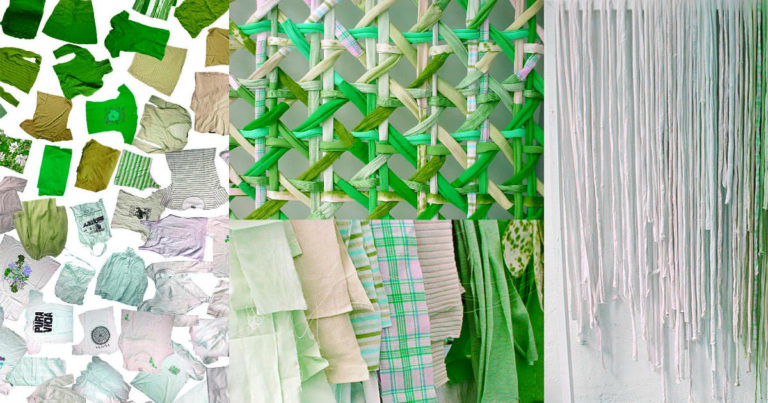Advertisements
Recycling has played a vital role in preserving the environment by transforming what was once considered waste into new, useful products. A striking example of this process is the transformation of a simple soda bottle into a T-shirt.
This metamorphosis, which may seem magical, is actually the result of a sophisticated and efficient industrial process that has been in place for decades. How a bottle becomes a t-shirt is something worth exploring, especially considering the positive environmental impact of this practice. You can check out this entire process in more detail in our article: Pet fabric.

The PET Bottle Recycling Process
It all starts with recycling PET bottles, one of the most common types of plastic used for beverage packaging. PET bottles are collected, washed and crushed into small flakes. These flakes are then melted down and turned into polyester yarn. This material, which was originally a plastic bottle, is now ready to be used in the textile industry. And so, the bottle becomes a T-shirt, a remarkable example of how recycling can turn waste into valuable resources.
The transformation of a bottle into polyester fiber is a remarkable example of how recycling can convert waste into valuable resources. After this conversion, the polyester fibers are sent to textile or knitting factories. There, they are blended with other textile fibers, such as viscose, cotton, linen or silk, to create a variety of fabrics. This is the fundamental process by which a bottle is turned into a T-shirt, showing the versatility and usefulness of the recycled material.
The Versatility of Polyester Fabrics
The resulting fabrics can be made entirely of polyester or a blend of polyester and other fibers. 100% polyester fabrics, such as Tergal, are popular in sportswear for their durability and ease of maintenance. Polyester is also used in combination with other fibers to create fabrics that offer both comfort and functionality. This is one of the reasons why a bottle can be turned into a T-shirt and other clothing items, offering practicality and sustainability.
A common example is Perolin, a fabric that combines linen and polyester. This blend results in a fabric that offers the lightness and comfort of linen with the durability and practicality of polyester. In addition, microfiber, which is 100% polyester, is widely used in the manufacture of suits, trousers and shirts, thanks to its resistance and ease of care. And so, the bottle becomes a T-shirt or even suits and trousers, showing the wide scope of recycling PET bottles.
From Fiber to Fabric to Final Product
Once the polyester fibers are turned into fabric, the material is sent to the manufacturing plant, where it is cut and sewn into the desired garment. The end result can be a variety of clothing products, such as t-shirts, sweatshirts, suits, and pants. It’s amazing to think that a simple bottle can be turned into a t-shirt through this process. The finished fabric not only retains the qualities of polyester, but can also incorporate the characteristics of the other fibers it was blended with, resulting in high-quality and highly useful products.
How Many Bottles Do You Need for a T-Shirt?
A common question is how many PET bottles are needed to make a single t-shirt. To understand this, it is important to know that a 2-liter bottle, which contains about 50 grams of PET, will produce approximately 50 grams of polyester fiber. This means that there is no loss of material during the transformation process. Therefore, when thinking about how a bottle becomes a t-shirt, it is important to consider the efficiency of this process.
To calculate how many bottles were used in a garment, simply weigh the garment and determine the proportion of polyester it contains. For example, a 300-gram sweatshirt made from 67% of polyester fiber and 33% of viscose will contain 201 grams of polyester. This is equivalent to about four 2-liter bottles. So, when you consider how one bottle becomes a T-shirt, you can see the positive environmental impact of each garment made from recycled materials.
Environmental Impact and the Importance of Recycling
The fact that a bottle can be turned into a t-shirt is a powerful example of the positive impact recycling can have on the environment. Turning waste into new products not only reduces the amount of waste in landfills, but also reduces the need for virgin raw materials. This means less exploitation of natural resources and fewer greenhouse gas emissions associated with the production of new materials.
Furthermore, the recycling process helps raise awareness in society about the importance of disposing of waste correctly and actively participating in recycling programs. Each recycled bottle is a direct contribution to preserving the environment and building a more sustainable future. And by promoting the concept of a bottle becoming a t-shirt, we are encouraging more conscious and responsible consumption practices.
The Future of Recycling and the Textile Industry
Turning PET bottles into fabrics is just the beginning of what recycling can offer. With advancing technologies and growing environmental awareness, the use of recycled materials in the textile industry is expected to continue to expand. New methods and processes are being developed to make recycling even more efficient and to expand the range of products that can be made from recycled materials. And so, we will increasingly see how a bottle is turned into a T-shirt and other sustainable fashion items.
Sustainable fashion, which promotes the use of recycled fabrics, is increasingly gaining ground in the market. Conscious consumers are opting for products that have a lower environmental impact, and companies are responding to this demand with more environmentally friendly innovations and practices. In this context, understanding how a bottle becomes a t-shirt becomes essential for those who want to make more sustainable choices.
The incredible journey of how a bottle becomes a t-shirt is a testament to the power of recycling and innovation. The process of transforming waste into high-value products not only helps protect the environment, but also promotes a circular economy, where resources are used more efficiently and sustainably.
Check out other interesting facts about recycling clicking here.
Learn how to make art by recycling, Click here.




I am Marcelo Dias, director of the NGO Novos Herdeiros
We are committed to the environment and we are returning to our Sociocultural and Sports activities.
To this end, we are looking for companies that can donate t-shirts for our classes to use as uniforms.
In return, we leave space completely available for exploration by the companies that supply the shirts.
I am available for further clarification.
Marcelo Dias
11- 947479020
Good afternoon, my name is Marcelo. We work with industrial cleaning cloths, serving mechanical workshops, metalworking shops, machining shops, etc.
We are in need of cotton scraps and professional uniforms for disposal... where we transform them into cleaning cloths... making use of this material with full responsibility.
We pick up in SP or nearby…
Thanks in advance….